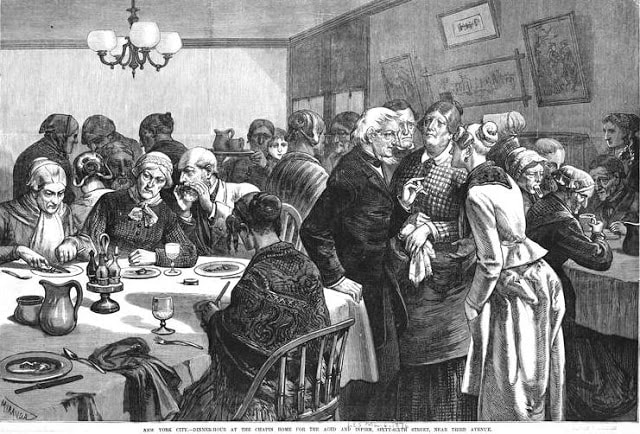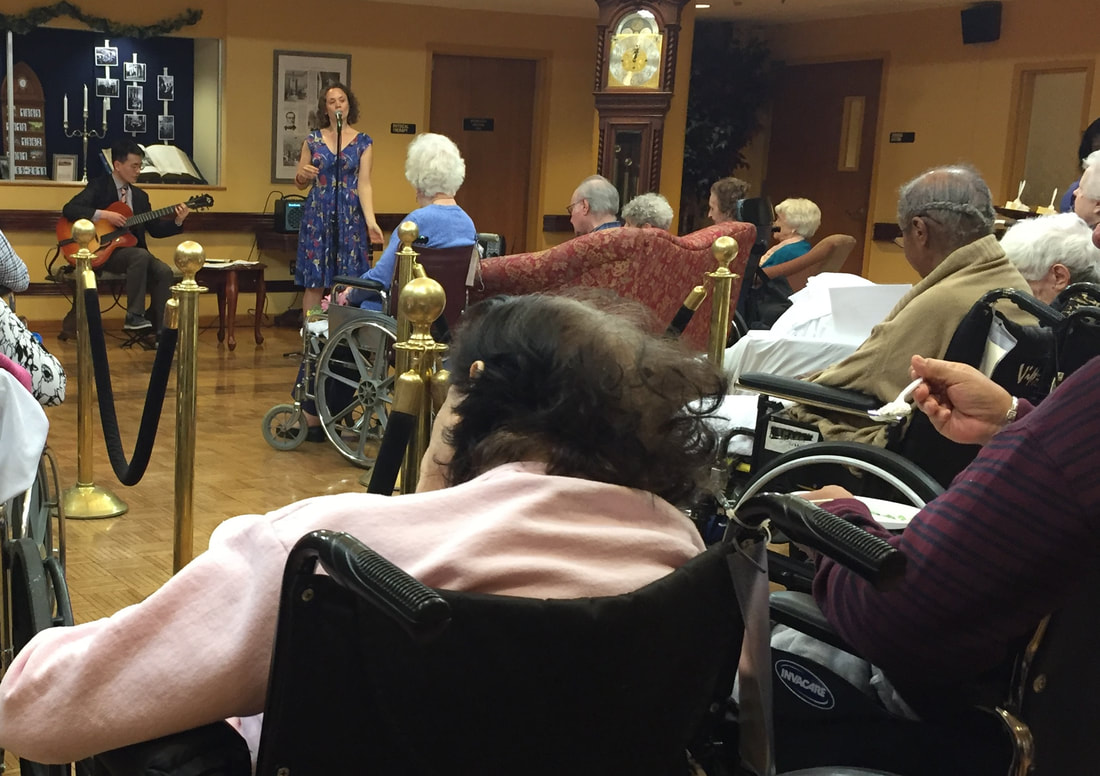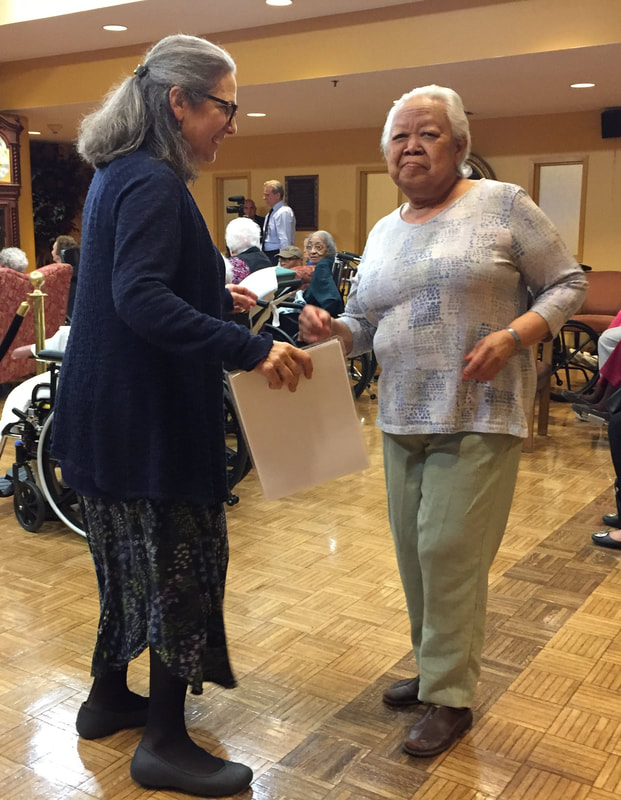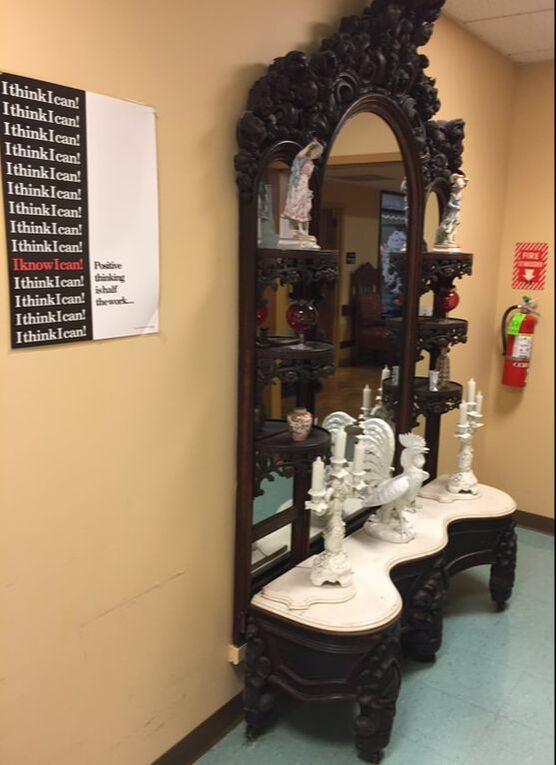|
In 1869, a group of civic-minded women opened a home for older people, on the island of Manhattan. The leader was Hannah Newland Chapin, wife of Edwin Chapin, a noted Universalist minister in New York. The motto of the Chapin Home was: “What is your need‚ not your creed.” In 1910, the home was moved to the glacial spine of Queens, where it remains to this day. http://daytoninmanhattan.blogspot.com/2012/01/lost-chapin-home-for-aged-and-infirm.html My mother, May Spencer, wrote about the Chapin Home as a reporter, and later Society Editor, of the Long Island Press in Queens. The home was on familiar turf -- right down the block from the beautiful new Jamaica High School, where my mom had been in the first group of students in 1927. The Chapin Home obviously made an impression on our mom. When we began to suggest that she needed more care than she was getting, alone, in the big old house where she had lived since 1925, she was having none of it. However, she allowed as how she had found the Chapin Home to be a nice place when she was a young reporter. And when it became necessary, our mom spent most of the last years of her life in the Chapin Home. For the past month, the Chapin Home has been celebrating its 150th anniversary. How many institutions last that long? Well, in that same year, with the wounds of the Civil War so visible, when these civic-minded woman built a rest home, the American Museum of Natural History was founded in New York City; the “golden spike" was driven in Utah, completing the first transcontinental railroad; the Cincinnati Red Stockings became the first fully professional baseball team. (Jesse James robbed his first bank that year, Happy anniversary, Jesse.) And the Chapin Home is still going strong. I heard about a sesquicentennial party last Friday and accepted an invitation. But first, I consulted my siblings about their memories of Mom in Chapin. We all agreed that Mom’s formidable intelligence and strong will had given the staff a good challenge. One of the caretakers – I believe with a lilting Trinidadian accent – had nicknamed Mom “City Hall.” You know – you can’t tell City Hall anything. My sister Liz recalled how the staff would make sure Mom was dressed for a ride in her wheelchair down the block to Jamaica High and how Mom would sit in Goose Pond, across the street, and tell about her days at Jamaica. Liz’s husband, Rich, has fond memories of the weekly Catholic Mass there, and the musical entertainment – and how he would dance with some of the “showgirls” who lived at Chapin. My sister Jane recalled how “staff members were so welcoming, and helpful,” and how other residents became Mom's friends - and ours. “What a blessing it was for her to spend her final years there,” Jane said. My brother Chris remembered how the staff “showed loving humanity,” particularly a caretaker named Delva (still at Chapin) who “called me several times in Mom's early days at Chapin, either telling me what was most disturbing Mom or placing me in telephone contact with her.” And my wife recalled how the staff made it easy for her to sit with my mom in her final weeks, and play opera on the CDs, and how other residents would visit the room, for the music as well as to give support. With these memories fresh in my notebook, I went back to Chapin last Friday and met Kathy Ferrara, the director of activities‚ volunteers and spiritual care, a friendly face from Mom’s time. I also ran into Janet Unger, the former administrator, now retired, and Jennifer McManamin, now the chief administrator. I felt great energy and purpose from all the staff. Nearly 17 years later, the main hall, under a bright skylight, seemed like home -- full of residents, many in wheelchairs, or with walkers, the clientele as diverse as Queens itself. After lovely music by a harpist, Chapin honored seven residents as centenarians – 100 years or older – and three others who are 99, including Frances Cottone, who wore her red Marines cap, having served stateside during World War Two. (Local Fox News, Channel 5, did a nice feature on the centenarians) https://www.chapinhome.org/news After a few short talks, the staff distributed birthday cake, while a pretty singer entertained with American standards – Gershwin, Rodgers and Hart, plus Tom Jobim’s “Corcovado,” in Portuguese. I later looked up the singer, Hilary Gardner, and discovered she is very active in jazz circles, in New York, Europe and elsewhere – and has a very interesting web site. https://www.hilarygardner.com/about Some residents smiled and applauded the music; others just took it in. A few ladies danced in place, or with a few young male attendants, and Kathy Ferrara, alert and smiling, just as I remembered her, danced with several women. (She even got me up on my feet for a few minutes for my vague approximation of the lindy.) Visiting my mom for five years demystified aging for me. On my return, I remembered how hard the staff worked, how they kept the Chapin Home clean and positive. I have no illusions about the daily routine back in the residential wing -- the care needed by the ill and the elderly, the hard work, the constant upbeat attitude.
Memories of my mom flooded back: sharing her mid-day meal, looking out her window at Joe Austin Park (named for an epic youth coach in Jamaica, an honor bestowed by one of his star athletes, named Mario Cuomo.) Coming back, years later, I felt very much at home.
Hansen Alexander
6/3/2019 10:19:04 pm
What an inspiring story about your mother the reporter, and your mother the aging patient. Being good to people and taking care of people. Ultimately, that is what life is really all about, and should be all about. I enjoyed this piece tremendously, George, and particularly your quotes of so many family members.
George Vecsey
6/4/2019 07:44:02 am
Hansen: thanks so much. Not only did our mom have 24-hour care, at last, but we could enjoy visiting with her -- quality time. I loved that the siblings all had the same experiences -- getting out to see Jamaica High (I'm the only sibling who went there) and also walking (pushing) to a Sri Chinmoy vegetarian restaurant a few blocks away., My mom always commented on the saris worn by the women: how did they stay up? Chapin made it easy to spend hours with her; they did the work, and she was safe at night....My best to you. G
Randolph
6/6/2019 06:01:22 pm
George,
Mendel
6/4/2019 01:35:31 am
Beautiful, George, and sensitive as always.
George Vecsey
6/4/2019 07:44:53 am
Mendel, thanks so much. GV
Altenir Silva
6/5/2019 12:35:28 pm
Dear George: Wow!! What a fantastic text about this rest home. And how your memory is beautiful about your past and your beloved mother. I visually got it all, like I was watching a movie. I'm proud of the music playlist of the event having Tom Jobim as well.
George Vecsey
6/5/2019 01:50:56 pm
Altenir: Thanks you for noticing. All those memories came racing back as soon as I saw "Chapin" in my queue.
bruce
6/6/2019 02:51:28 am
george, 6/6/2019 04:02:19 am
I loved this story, George. Well-written articles about older people evoke poignancy, nostalgia, humanity and mortality like few other subjects. I'll read the embedded links and will raise a toast to City Hall, who raised a mensch of a son. 6/29/2019 10:13:02 am
George it was a pleasure meeting you and recording your beautiful comments about Chapin Home. It is God's work that they do there. They continue to take care of the frailest of the frail when their own families can't or don't want to and they do it better than any other. Your story really lays it out perfectly. Comments are closed.
|
Categories
All
|













